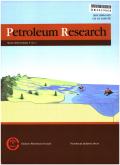通过模拟模型评价枯竭油藏封存CO2的潜力
IF 4
Q1 Earth and Planetary Sciences
引用次数: 0
摘要
为了实现净零排放,大规模实施碳捕集与封存(CCS)变得越来越必要,特别是对发展中国家来说,它们受到二氧化碳(CO2)不断增加的排放的严重影响。人们还观察到,发展中国家在大气中二氧化碳的排放方面参与不多,但由于地理位置的原因,它们受到全球变暖的很大影响。因此,应对气候变化及其影响的挑战需要在安全可靠的地点进行大容量存储。由于具有足够的孔隙度和渗透率,枯竭的油气储层为储存二氧化碳提供了宝贵的选择。在本研究中,通过油藏模拟对地下油藏的CO2储存量进行了模拟研究和综合分析。与以往的研究不同,本文引入了一种模拟方法来评估油藏中二氧化碳储存的可行性。利用商用成分模拟器对某油藏的储层进行了模拟。在整个注入过程中,通过气体注入剖面和注入速率来检测二氧化碳在注入过程中的行为。研究结果表明,储层压力在各层和栅格区块变化均匀,评价储层适合CO2储层。注入过程中的井底压力(BHP)变化表明了CO2封存的可行性。分析表明,在10年的时间里,以3500立方英尺/天的速度连续注入二氧化碳,成功实现了储层的封存,储层达到了空间极限,注入速率降至零。这些结果表明,二氧化碳储存作为一种减少温室气体排放的手段是可行和有效的。本文章由计算机程序翻译,如有差异,请以英文原文为准。
Evaluating the potential of depleted oil reservoirs for CO2 sequestration through simulation modeling
Leading to achieve net zero emissions, performing carbon capture and storage (CCS) on a large scale is becoming more necessary, especially for developing countries, which are highly affected by the continuously increasing release of carbon dioxide (CO2). It has also been observed that developing countries does not participate much in the release of CO2 in the atmosphere but are highly influenced by global warming because of geological location. Therefore, addressing challenges of climate changes and its impacts requires high-capacity storage in safe and reliable locations. Depleted oil and gas reservoirs offer a valuable option to store CO2 due to their adequate porosity and permeability. In this research, an effort has been made to provide a simulation study and comprehensive analysis of CO2 storage through reservoir simulation in subsurface oil reservoir. In contrast to prior works, this research article introduces a simulation approach to assess the feasibility of CO2 storage in an oil reservoir. Storage in an oil reservoir was modeled using a commercial compositional simulator. CO2 behavior during injection is examined using gas injection profiles throughout the injection duration and injection rate. Results of the study demonstrate that reservoir pressure changes equally in all layers and grid blocks making the evaluated reservoir suitable for CO2 storage. Bottom hole pressure (BHP) behavior during injection shows the feasibility of CO2 storage. The analysis revealed that continuous injection of CO2 at a rate of 3500 Mscf/day over a period of 10 years led to a successful storage scenario, with the reservoir reaching its space limit and the injection rate dropping to zero. These results suggest the viability and effectiveness of CO2 storage as a means of mitigating greenhouse gas (GHG) emissions.
求助全文
通过发布文献求助,成功后即可免费获取论文全文。
去求助
来源期刊

Petroleum Research
Earth and Planetary Sciences-Geology
CiteScore
7.10
自引率
0.00%
发文量
90
审稿时长
35 weeks
 求助内容:
求助内容: 应助结果提醒方式:
应助结果提醒方式:


